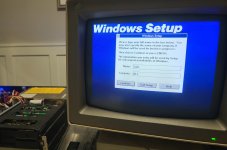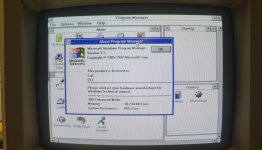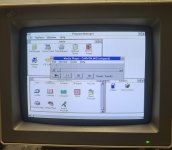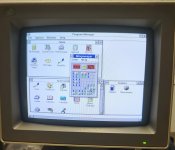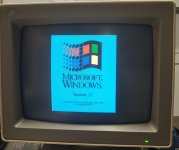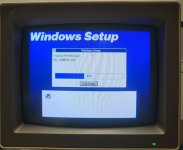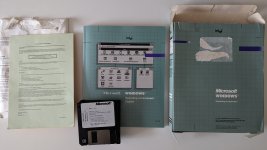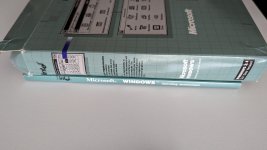I put "wrong" in quotes there because I feel like if you're splitting hairs you can say that all the floppy formats we call "High Density" are actually just "Double Density" that happens to run at a higher data rate.
I suppose that's an approach one could take, if one were focusing on the density of the encoding, but I think that's a terrible idea since you then need to entirely rework terminology for one of the most important parameters (and the one that causes the most incompatibility): the recording media.
This is why I refer to media as simply "standard density" and "high density." Any media labeled "single density," double density," or "quad density" is all standard density which, while not entirely straightforward, at least leaves the end user with a clear understanding of which media she should be using for what. (Well, there was also hard-sectored media, which fortunately fell out of fashion fairly quickly.)
Once you have media compatibility sorted out, the only other physical format compatibility issues of concern are from the drives: number of sides (one or two) and number of tracks/track density. This can be summarised as 48 or 96 tpi for 8" and 5.25" systems, and 40-track (rare) and 80-track for 5.25" and 3.5" systems. (There are some
slight variants here, such as using only 35 tracks on a 5.25" diskette.)
And that's about it: the rest is on the controller and software, which of course is the same across e.g. all PC/ATs, all FM-7/FM77s, or whatever system you happen be using. There's not really a lot of point in most discussions worrying about whether the encoding used by that is FM, MFM, GCR, or whatever.
Our so-called "High Density" formats are still MFM, but they've doubled the clock rate of the controller (and thus halved the size of the magnetic transitions), but you can make a reasonable case that they're still "Double Density" formats. (Verses using some yet newer/smarter encoding system.)
So this is a case where for me, clarity reigns over accuracy: almost nobody cares that it's MFM instead of a newer/smarter encoding system.
Everybody cares that you need to use HD instead of standard density media.
If you think about it the names we use for disk storage capacites are all nightmarishly ad-hoc and imprecise.
This is probably the core of the failure: not the imprecision but the fact that we're trying to use names involving "density" for
disk storage capacities, which of course are a function of media, head step pitch, flux-level encoding, and sectoring. That's
four different densities right there; no wonder people are confused! (And you give some nice examples of exactly this.)
So here's my suggestion about how we can all communicate more clearly about this:
- Use "density" to refer only to media, which are "standard density" and "high density" (HD). (Or one of the rare super-floppy densities.) In particular, never use the term "quad density."
- Use "single-sided" or "double-sided" as we already do.
- Use the number of tracks per side for track pitch. "40-track" and "80-track" cover all the most common cases (5.25" and 3.5" systems), and those using less common systems will know that, e.g., "35-track" is the same pitch as 40-track on 5.25" systems, and "77-track" is the common 48 tpi for 8" systems.
That covers all areas of physical compatibility for drives and media, including situations where you can read but not reliably write certain formats (e.g., 40-track diskettes in an 80-track drive). All the rest is up to the controller and software driving it, which can be given as a specific capacity and system/software name: e.g. "320K FM-7" or "360K IBM PC DOS."

